
Fogo
January 20 – May 12, 2022

Fogo is a platformer with unique modes of movement about an adorable fireball trying to return to the stars. The player launches, glides, and bounces from one fuel source to the next. They must be careful to move on before the flame burns out.
This game was my team's final project for the Independent Video Game Design program at Dawson College.
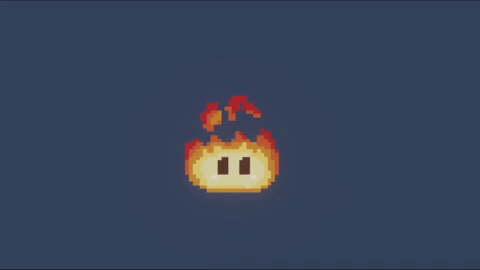


I was one of several designers and programmers working on Fogo. My most important contributions were:
-
Scope management
-
Vertical slice breakdown
-
Movement and controls (design and programming)
-
Level design of cavern and mountain levels
-
Design documentation
-
Mechanics prototyping
-
Sound integration
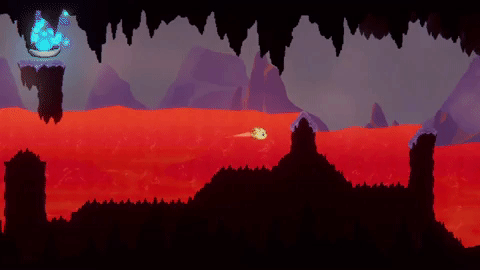
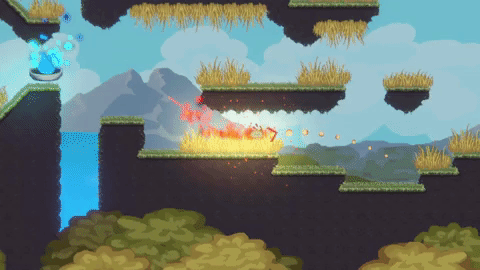
Scope Management
Progression Management
Movement — Core Design
The most important design pillar of Fogo is continuous movement. Fire is never static and always needs new fuel, and likewise the Fogo player is challenged to keep moving or fizzle out. To this end, I worked on many iterations of Fogo's movement, gradually making it more fluid and seamless. The controls also changed with time to become as intuitive as possible for the player.

Too slow!
Movement — Launch
Fogo moves from one fuel source to the next by launching himself. A dotted line indicator gives the player a rough idea of their trajectory, and the camera gradually zooms out while the player prepares to launch. These features give the player a feeling of control and make it easier for them to leap across large distances with precision.
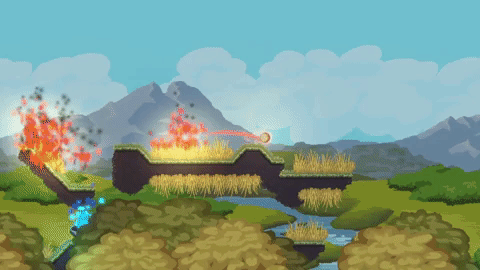
In alpha, the launch worked differently. Firstly, the joystick input was inverted to simulate the feeling of drawing back a slingshot. Secondly, Fogo would charge up each launch, building force over time. In playtesting, both of these features proved detrimental to our goal of smooth, continuous movement, so we removed them.
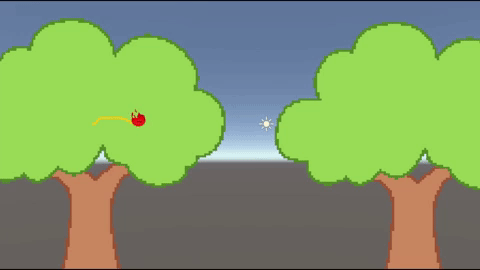
Fogo's launch speed would grow over time, indicated by the arrow.
Finally, we added some slight aerial control and the ability to bounce off terrain. These features eliminate waiting time in the air and give the player a huge range of possibilities for how they navigate levels. They also allow the creation of advanced aerial challenges.
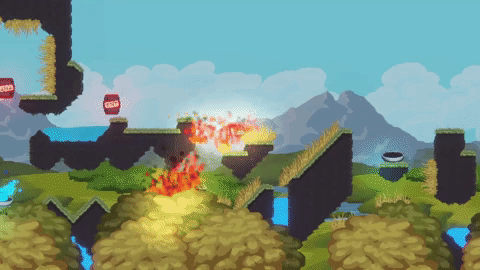
Movement — Swim
Within a fuel source, the player moves by "swimming" with a simple joystick input. If they move Fogo towards the edge of a fuel source, they can jump out using a "dolphin jump". The fluidity of the dolphin jump supports our core design of continuous movement.

In alpha, there was no dolphin jump. We were worried about players accidentally slipping out of a fuel source, so instead Fogo was only able to exit fuel using a launch. This turned out to feel restrictive to playtesters, so we removed this restriction.
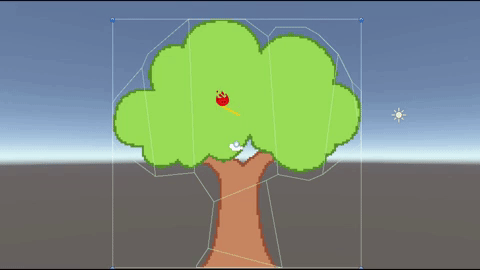
Fogo would slow down when approaching the edge of a collider.
Later, we found that players sometimes had difficulty staying within fuel sources while swimming. This was an issue with narrow fuel sources, so we made sure to thicken fuel sources where possible. Otherwise, players sometimes slipped when entering a fuel source at high speed, as shown on the right.

No time to react.
My solution is to slow the player down upon entering fuel if two conditions are met:
-
the player's trajectory will take them outside the fuel source with little time to react;
-
the player's input indicates that they intend to stay within the fuel source.
This way, if the player wants to stay within the fuel source, they will. But if they want to fly right through it without slowing down, they still can.
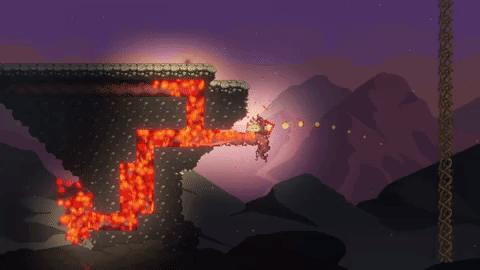
The solution in action.
Level Design — Preproduction
Level Design — Alpha
Below are some of my paper prototypes. First is the windmill, a level design ingredient that could act as a moving fuel source or an obstacle. We decided this concept was a stretch goal due to its relatively high art requirements. Second is the Mossy Cavern, a level designed to introduce the player to fast-burning yellow fuel in a safe environment.


We soon began prototyping levels using LDtk. Here are some of the early prototypes that carried over into the final version of the game alongside their finished counterparts.
In alpha, I worked on some of the difficult mountain levels towards the end of the game. The player is tested to bounce their shots from surfaces to reach their goal. This mechanic was developed during alpha, and it proved challenging and fun for players to master. There are also some mazes of tree roots that players found delightful due to the sheer amount of fire! The mazes turned out to be frustrating to navigate due to narrow passages, so they were a point of improvement across development.


These levels create time pressure with fast-burning yellow fuel, increasing the precision challenge as the player swims and launches.
Level Design — Beta
Design Documentation
After our early beta playtest, I was tasked with going over the early levels to ensure the introduction of features was smooth and intuitive. I had two goals:
-
eliminate issues some players were having with identifying brown and yellow fuel as "platforms" to move through, and
-
better introduce some newly added mechanics, the bounce and "dolphin jump".
I wrote the game design document for Fogo, which breaks gameplay challenges down to their atomic parameters. This helped us deepen our understanding of gameplay and better control the pacing.
Gameplay loops and rational game design tables from the GDD.
I also wrote an analysis of Fogo's gameplay patterns. This was critical for defining various degrees of difficulty for each atomic parameter.
I performed this analysis by studying specific challenges from the game, which gave me concrete references of difficulty.


Credits
Tristan Durocher
Christopher Bradshaw
Noah MacDonald
Gabriel Bulcao Rachman
Jeremy Selwyn
Maria Starostina
Fred White
Producer
Programmer
Designer and Programmer
Designer and Programmer
Artist
Sound Designer and Composer








